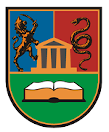Please use this identifier to cite or link to this item:
https://scidar.kg.ac.rs/handle/123456789/9572Full metadata record
| DC Field | Value | Language |
|---|---|---|
| dc.rights.license | openAccess | - |
| dc.contributor.author | Markovic, Goran | - |
| dc.contributor.author | Ćirković M. | - |
| dc.contributor.author | Maletin S. | - |
| dc.date.accessioned | 2020-09-19T18:36:44Z | - |
| dc.date.available | 2020-09-19T18:36:44Z | - |
| dc.date.issued | 2012 | - |
| dc.identifier.uri | https://scidar.kg.ac.rs/handle/123456789/9572 | - |
| dc.description.abstract | Fish farming is the only type of aquaculture in Serbia. Fish farming is mostly carried out in cyprinid and salmonid (trout) fishponds (over 95% of the total fish produced), with considerably lower ichthyoproduction being practiced in cages and some bodies of open water such as reservoirs and channels. Serbian aquaculture currently includes 12 fish species, 4 of which are allochthonous (non-native). With the exception of the rainbow trout (Oncorhynchus mykiss) and, to a certain extent, grass carp (Ctenopharyngodon idella), silver carp (Hypophthalmichthys molitrix) and bighead carp (Hypophthalmichthys nobilis), allochthonous fish species have no economic importance. The presence and abundance of certain allochthonous species in fishponds and open waters have a negative effect on the total ichthyoproduction. | - |
| dc.rights | info:eu-repo/semantics/openAccess | - |
| dc.rights.uri | https://creativecommons.org/licenses/by-nc-nd/4.0/ | - |
| dc.source | Journal of Central European Agriculture | - |
| dc.title | The role of allochthonous (non-native) fish species in Serbian aquaculture | - |
| dc.type | article | - |
| dc.identifier.doi | 10.5513/JCEA01/13.3.1086 | - |
| dc.identifier.scopus | 2-s2.0-84866991813 | - |
| Appears in Collections: | Faculty of Agronomy, Čačak | |
Files in This Item:
| File | Description | Size | Format | |
|---|---|---|---|---|
| 10.5513-JCEA01-13.3.1086.pdf | 137.42 kB | Adobe PDF |  View/Open |
This item is licensed under a Creative Commons License


